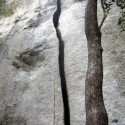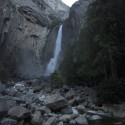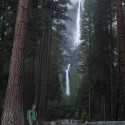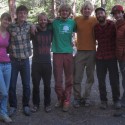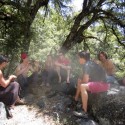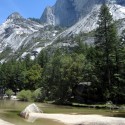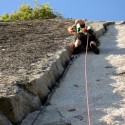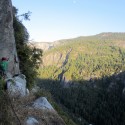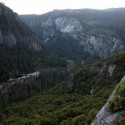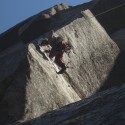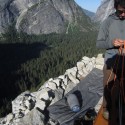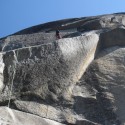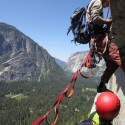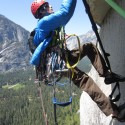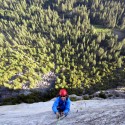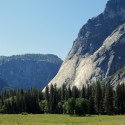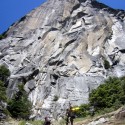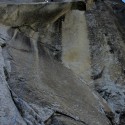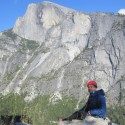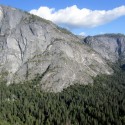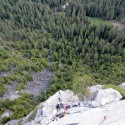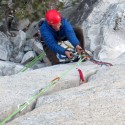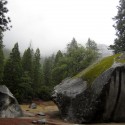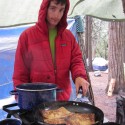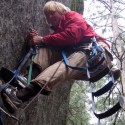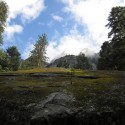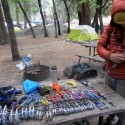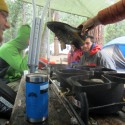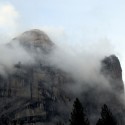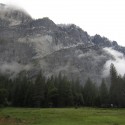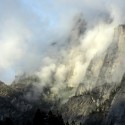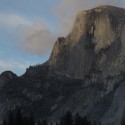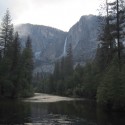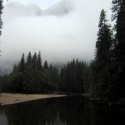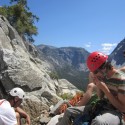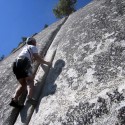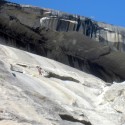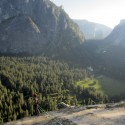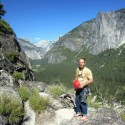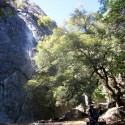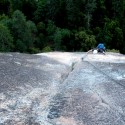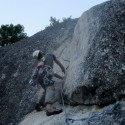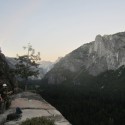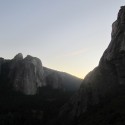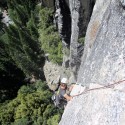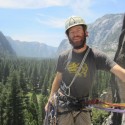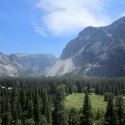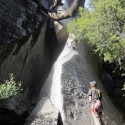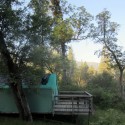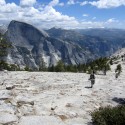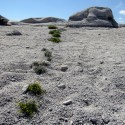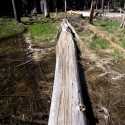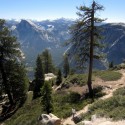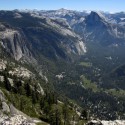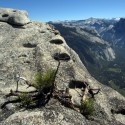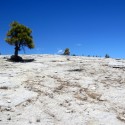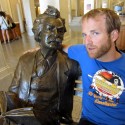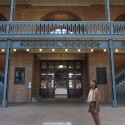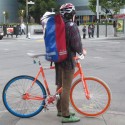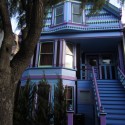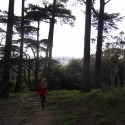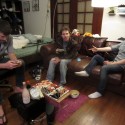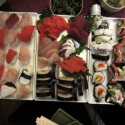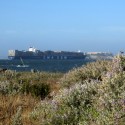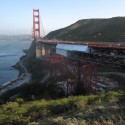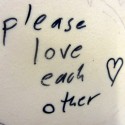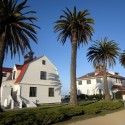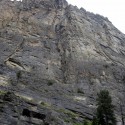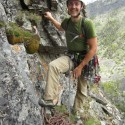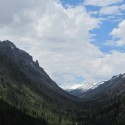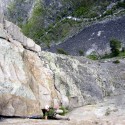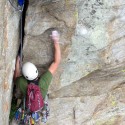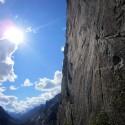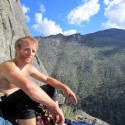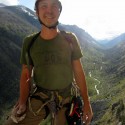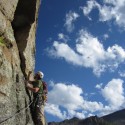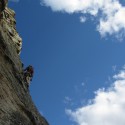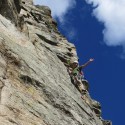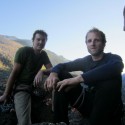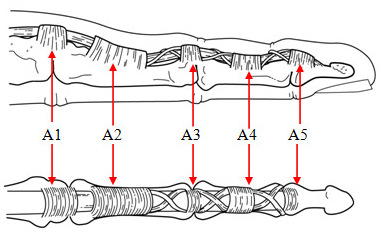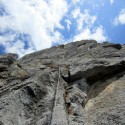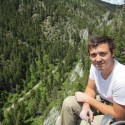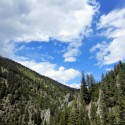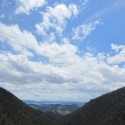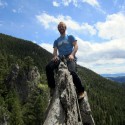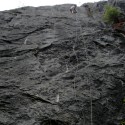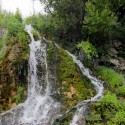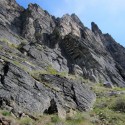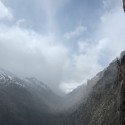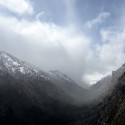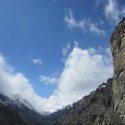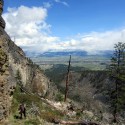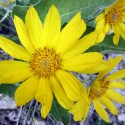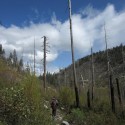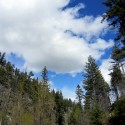A song by The Magnetic Fields. Specifically, the one and only Stephin Merritt. Beautiful.
Washington Column Day 2
You wake up in the morning hundreds of feet above the valley floor. Your day will consist of climbing. Your decision making energy is entirely directed towards climbing. For a brief period of time it is a simpler existence that reminds me of a main reason why I enjoy bike touring so much. Your objectives are clear.
Climbing Washington Column: Day 1
Finally the weather cleared and we headed out with our German friends Simon and Lawrence, to climb Washington Column.
I got to lead a pitch of 5.10 to skip a bit of a line that had formed at the second pitch. Definitely felt adventurous. I also did my first ever pitch of aid climbing in a pretty epic setting.
It was awesome to be climbing with Cole, who has quite a bit more big wall experience and the patience to teach the rest of us goobers.
More Cold Yosemite and Some Aid Climbing
The next day was cold, cloudy, and raining again. After a lazy morning we went out to practice aid climbing. Aid climbing involves carrying ladders made out of webbing to stand on and allows you to get up sections that would be almost impossible to free climb.
Our plan was to climb the south face of Washington Column as soon as the weather improved, which requires aiding.
Cold Yosemite
The day after climbing Royal Arches was at a relaxed pace. We hung around Camp 4 and then Cole and I climbed the 2-pitch route Harry Daley (5.8), called “One of Yosemite's best 2 pitch climbs” by some dude.
The first pitch is pretty thin and the second is a handcrack. It was fun to climb on Glacier Point Apron.
The next day was my first day of cruddy weather in Yosemite. Every other day had been sunny, but that day it got about 40 degrees colder (saw snow at times) and was cloudy all day. These pictures are all from the cold day.
No climbing was attempted.
Yosemite- Royal Arches
On the 3rd day in the Valley Floor I had met up with my friend Cole and we climbed Royal Arches with Cole’s friend Pete and Pete’s Dad. Royal Arches is 15 or so pitches of wandering easy climbing (5.7). We did a variation that took us up a pitch of 5.9 and easy 5.10. Probably the tallest route I had ever been on
Climbing in Yosemite – Day 2
The second day we set out to do Nutcracker, a 5-pitch 5.8 on the grandiosely named Manure Pile Buttress. We got to the base of the route and there were multiple parties climbing all over it. They were ‘mobbing’ it as one kid put it. We decided to get on After 6, a more mellow climb of the same length on the same formation.
After 6 was pretty chill to say the least, and despite an extremely relaxed start to the day, we were done with 3 or 4 hours of daylight left. We decided to get back to the bottom and climb Nutcracker too. It turned out to be an excellent route and we did it in the best light of the day with no jabronies mucking up the works.
First Day Ever Climbing in Yosemite
Sunday night I was dropped off after we had hiked 15 or so miles and had no idea what I was doing. After a bit of an adventurous first night spent on the valley floor I acquired a place to camp in Camp 4. I had joined the line to acquire spots in Camp 4 around 5am that morning and ended up being the 3rd person in line.
Dan Carter was the 4th in line. He was looking for someone to climb with, and we ended up shrending for the next 2 days. Dan is the man.
These pictures are from the first day where we climbed at an area called Church Bowl.
Yosemite Backpacking
2 days of hiking. We parked at the Porcupine Creek Trailhead on Tioga Pass Road and hiked to the summits of North Dome, Eagle Peak, and El Capitan.
Cole and Peter’s Route
I am exhausted and I need to pack but all I want to do is think about the climb we did today. My friends Cole and Peter put it up a while back. Destined to be a classic.
More info on climb found here.
*** Edit: I took a 40+ foot fall on this route ***
While leading the 4th pitch I climbed past an orange TCU to a good rest and thought about putting another piece in. The climbing was in a finger crack where you could pretty much protect wherever you wanted to.
I could see another good stance after a few more moves and thought I would be able to make it and so I just kept climbing, a mistake I hope never to repeat.
The next moves involved liebacking on an edge that was less positive than it looked from below, a bit of lichen, some bad footwork by me, and a bush.
I remember thinking “I really need to get my feet higher” and I popped off without warning. The TCU was in a flaring crack and came out with what felt like zero resistance. My next piece was a #3 camalot 8-10′ below the TCU which held.
While falling I had time for a bit of swearing and a thought similar to “Why haven’t I stopped yet?” The climbing was vertical enough that the fall was clean, which was extremely nice.
While driving to Mill Creek in the morning I remember talking with Conor about the idea that if you end up with a marginal piece of protection in you definitely need to be mindful that it is marginal. After I put that TCU in, for whatever reason, I didn’t give it another thought.
I could tell after I fell I had done something to my hand, but it didn’t seem that bad at the time and I finished the pitch.
The next day it was swollen and I thought I might have hit it on something and broken it. A week afterwards it was still a bit swollen (not discolored at all) and sore and I decided to get it x-rayed. Fortunately, nothing was broken.
From when I can gather I tweaked to my A1 pulley and maybe A2 as well in my pointer finger.
At the hospital they said I had ‘trigger finger’ caused by repetitive motion, but I know it happened when I fell.
From this article
http://www.diagnosticimaging.com/display/article/113619/1187922
Imaging is used to grade pulley injuries on a scale developed by Schoffl et al.4 Grade 1 injuries are pulley strain with no bowstringing. Grade 2 injuries include complete A4 pulley rupture or partial rupture of A2 or A3, while grade 3 lesions involve complete ruptures of the latter. Multiple ruptures or single ruptures combined with lumbrical or collateral ligament trauma are grade 4 lesions.
Injuries graded 1 through 3 are initially treated conservatively, while grade 4 lesions are treated surgically.
Conservative management consists of rest, ice, and nonsteroidal anti-inflammatory medications. No evidence-based guidelines exist as to how long climbing should be avoided, but generally the prognosis for these injuries is excellent. In fact, conservative treatment has been shown to result in no long-term strength deficit and a return to normal climbing levels within one year, even in cases of complete single pulley ruptures.
Werd.

